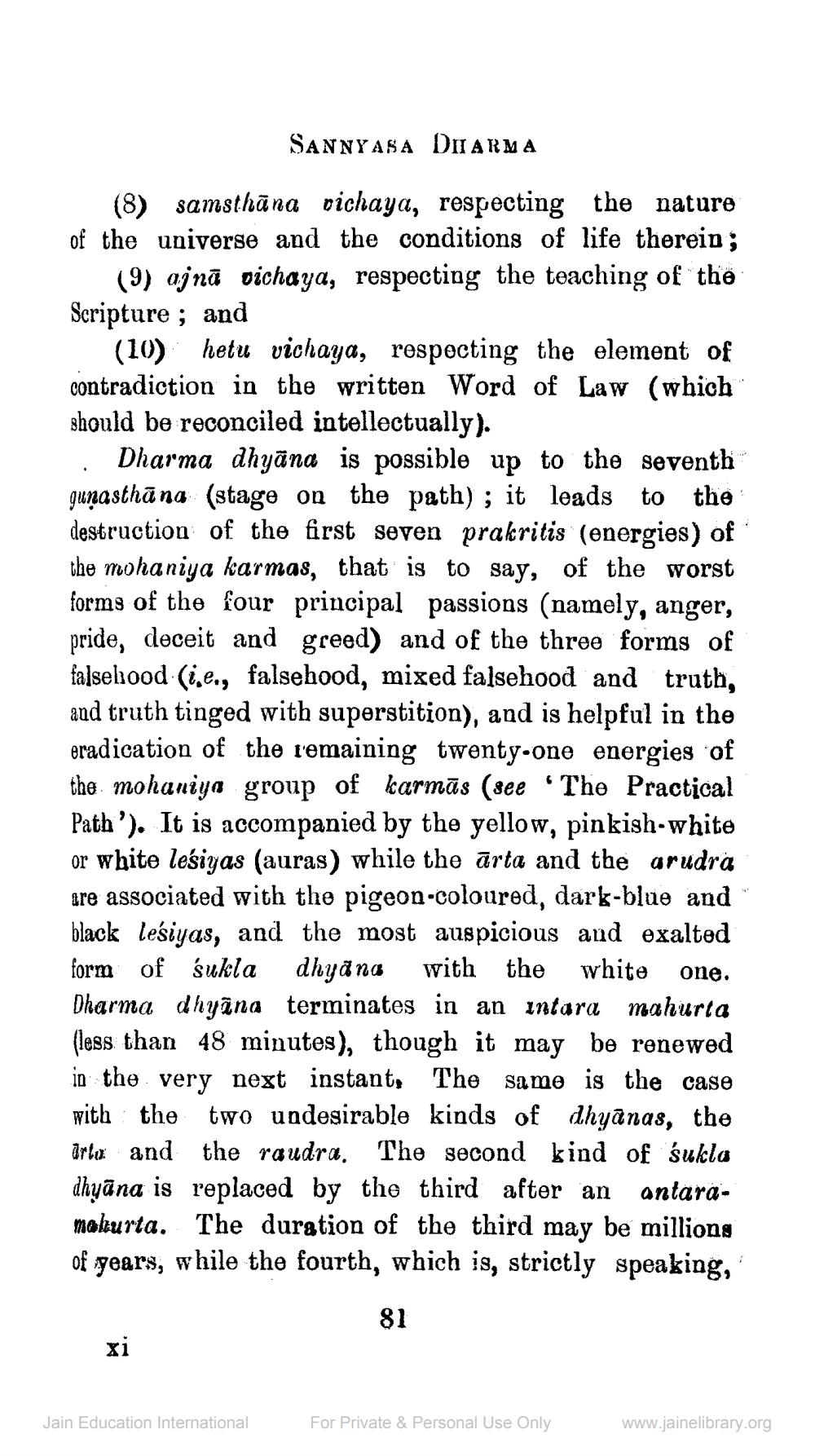________________
SANNYASA DIIARMA
(8) samsthāna vichaya, respecting the nature of the universe and the conditions of life therein;
(9) ajnā vichaya, respecting the teaching of the Scripture ; and
(10) hetu vichaya, respecting the element of contradiction in the written Word of Law (which should be reconciled intellectually).
· Dharma dhyāna is possible up to the seventh gunasthāna (stage on the path); it leads to the destruction of the first seven prakritis (energies) of the mohaniya karmas, that is to say, of the worst forms of the four principal passions (namely, anger, pride, deceit and greed) and of the three forms of falsehood (i,en, falsehood, mixed falsehood and truth, and truth tinged with superstition), and is helpful in the eradication of the remaining twenty-one energies of the mohaniya group of karmās (see 'The Practical Path'). It is accompanied by the yellow, pinkish-white or white lesiyas (auras) while the ārta and the arudra are associated with the pigeon-coloured, dark-blue and black lesiyas, and the most auspicious and exalted form of śukla dhyana with the white one. Dharma dhyāna terminates in an intara mahurta (less than 48 minutes), though it may be renewed in the very next instant. The same is the case with the two undesirable kinds of dhyānas, the drla and the raudra. The second kind of śukla dhyāna is replaced by the third after an antaramakurta. The duration of the third may be millions of years, while the fourth, which is, strictly speaking,
81
Jain Education International
For Private & Personal Use Only
www.jainelibrary.org




